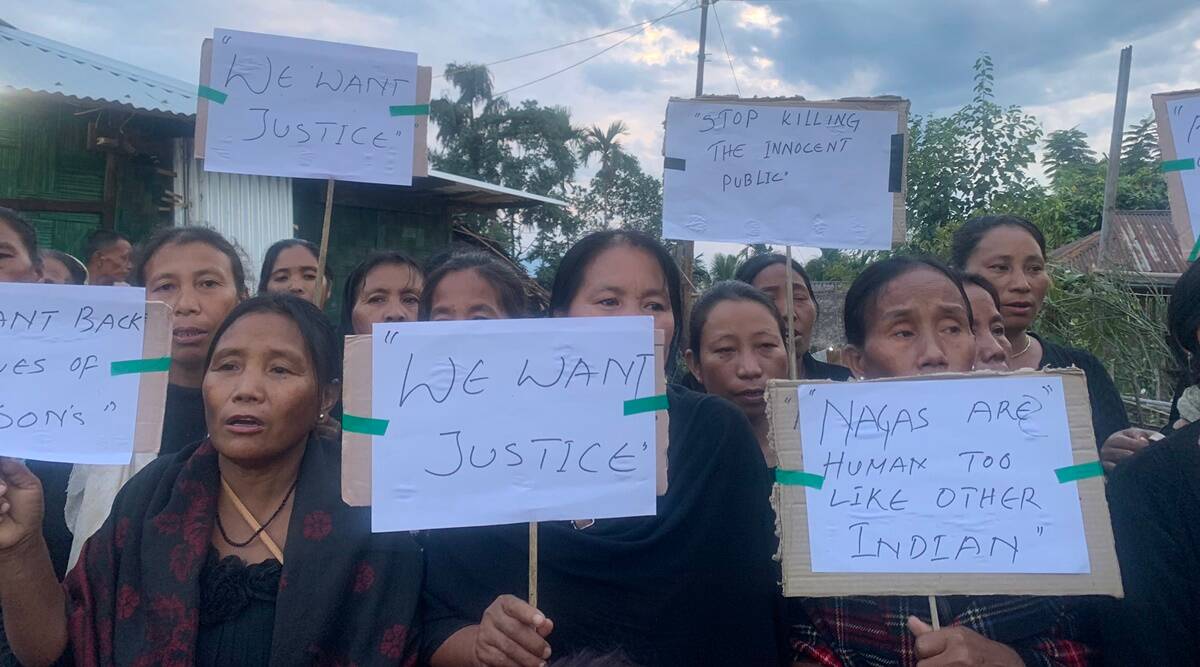The Chumpha Phanit, a post harvest agricultural festival among the Tangkhuls, acknowledges women’s role in the traditional Naga economy
By Tennoson Pheiray

Now that the harvest is almost over in most Tangkhul villages, people are getting ready for Chumpha Phanit. Chumpha Phanit is an important post harvest and agricultural festival that the Tangkhul community celebrates. Apart from this, there are two other agriculture related festivals: Luita Phanit and Mangkhap Phanit.
This festival is one of the most significant festivals of Tangkhul community, especially for married women as it marks a change of hands and exchange of responsibility from mothers-in-law to their daughters-in-law.
In the olden days, one day prior to the festival, the menfolk of the village would take out their bows, spears, knives, axes, etc., and keep in the open courtyard and go away to the jungle in search of crabs. The menfolk would collect crab and soft reddish clay and spend the night in the jungle. They would then return only the next day with the crabs and clay. The womenfolk would then take the live crabs -which are carefully moulded with clay -and put inside the granary.

Local MLA Alfred Kanngam Arthur opening the festival
As mentioned earlier, a significant part of this festival is handing over of responsibilities to the newly married women. It is during this festival that the mother-in-law hand over the charge of the granary to her daughter-in-law after due process and observance of “Chum-Sin-Sa”.
According to Tangkhul custom and tradition, “Chum-sin-sa” is the practice whereby the parents of the bride have to offer certain animals to the groom’s family for a feast to announce that their daughter is now capable of managing the kitchen of her in-laws. It was only after this ritual that the mother-in-law would hand over the responsibility of the house to the daughter-in-law.
Again, in the olden days, lovers were usually betrothed or married off during the spring season and not any other season. The newly married women would help her-in-laws in tilling the field, transplanting the rice and harvesting the paddy and only after this phase of work, she would be recognised as the “akhaivaiva” (mistress of the house). This recognition is only a process to entrust the responsibility of the kitchen to her . The ceremony of “Chum-sin-sa” is a must to give complete responsibility to the daughter-in-law.

The village authority or elders usually announce the date for this festival only after the whole village has completed their paddy harvest for the year. There is no fixed date for the said festival; it depends on the completion of the harvest of the village.
During this festival, the older womenfolk invoke blessings from the creator to bless their harvest. They pray for a bountiful granary so that it will sustain them throughout the year upto the next harvest. The womenfolk make sticky rice bread and share them with family, friends, neighbours and villagers and conclude the Chumpha Phanit with merry making.
Chumpha Phanit is an acknowledgement of the important role women play in the economy as care takers, nurturers and managers of household wealth.

When we look at the stories of the olden times, women had a much higher position within the social structure. How their role deteriorated over the years could be due to many factors. One of them could be the lukewarm attitude towards our festivals- especially those closely linked with our land- which are always related to the various roles every person has in a community.
It is up to the people to keep alive and revive such celebrations. Halang Village, located about 12km north of Ukhrul has been consistently celebrating Chumpha Phanit. Maybe, there is a slight variation in the way they celebrate It now. Yet, such activities will always play an important role in carrying forward our identity as a people and reaffirming our close relationship with our land.

At Halang, the villagers had set up stalls at Zingkat Wonra, the venue where the celebration took place. People were seen visiting the stalls to buy various products including sticky rice bread and vegetables.







 Meet R.N. Ravi, who is mediating peace with the Nagas
Meet R.N. Ravi, who is mediating peace with the Nagas The Top Viral YouTube Videos of 2017
The Top Viral YouTube Videos of 2017 The last Konyak headhunters of Nagaland
The last Konyak headhunters of Nagaland What Does Your Face Say About Your Health?
What Does Your Face Say About Your Health?










Leave a Reply
Your email address will not be published. Required fields are marked (required)